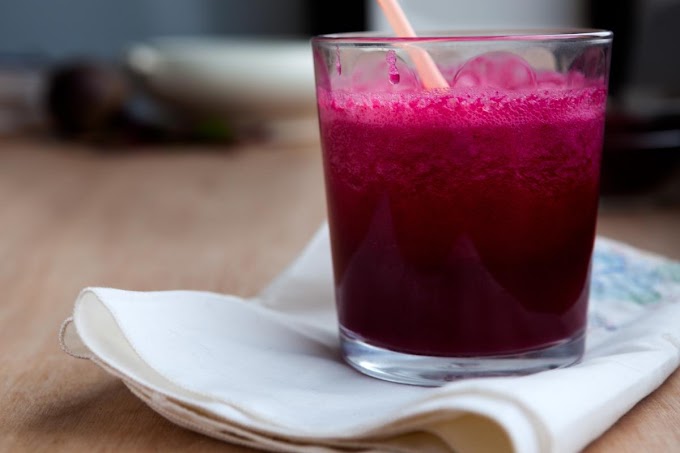What is Oden?
Oden is a traditional Japanese one-pot dish commonly eaten during the colder months. It's sold by street vendors, in convenience stores, and at specialty restaurants across Japan. In the home kitchen, oden is a versatile and customizable dish that can be adjusted according to preferences or the availability of ingredients. The dish is simmered slowly over a long period, allowing the flavors of the broth to deeply penetrate each item in the pot, giving it a rich yet delicate taste.
Key Ingredients in Oden
To make oden at home, you need a combination of broth (dashi) and a variety of ingredients. Here are some traditional components:
Dashi Broth: This is the backbone of the oden flavor. Dashi is made from kombu (kelp) and katsuobushi (bonito flakes), and it provides the umami base for the dish. Some people add soy sauce, sake, and mirin for extra depth.
Fish Cakes (Kamaboko and Chikuwa): Fish cakes are essential to oden and come in many forms. Kamaboko is a type of steamed fish cake, while chikuwa is a grilled or fried tube-shaped fish cake. These are sold in various shapes and sizes, making the oden pot visually appealing.
Konnyaku (Konjac): This jelly-like ingredient is made from the konjac plant and has a firm, chewy texture. It’s low in calories and absorbs the flavors of the broth well.
Daikon (Radish): Daikon adds a sweet, tender element to the dish. When simmered in the broth, it becomes soft and flavorful.
Boiled Eggs: These add richness to the oden, and they take on the savory essence of the dashi when simmered.
Atsuage (Fried Tofu): Atsuage is deep-fried tofu that adds a hearty, slightly crispy texture to the oden. It absorbs the broth, making each bite flavorful.
Ganmodoki (Tofu Fritters): These tofu fritters are often mixed with vegetables like carrots or burdock, providing a crunchy contrast to the softer ingredients.
Shirataki Noodles: Made from konjac, these noodles are low in calories and add a fun texture to the oden.
Hanpen (Soft Fish Cake): Hanpen is a fluffy, white fish cake that adds a mild flavor to the dish. It absorbs the broth quickly and is a favorite among many oden lovers.
Step-by-Step Recipe for Making Oden
Here’s a straightforward guide on how to make oden at home. The recipe serves 4-6 people.
Ingredients:
1 liter dashi broth (homemade or store-bought)
2 tbsp soy sauce
1 tbsp mirin (sweet rice wine)
1 tbsp sake
1 daikon radish, peeled and sliced into thick rounds
4-6 boiled eggs, peeled
200g assorted fish cakes (kamaboko, chikuwa, hanpen)
1 block konnyaku, cut into bite-sized pieces
2 blocks atsuage tofu, cut into quarters
200g shirataki noodles, rinsed and drained
100g ganmodoki (tofu fritters)
Mustard (karashi) for serving (optional)
Instructions:
Prepare the Dashi Broth: If you’re making homemade dashi, soak a piece of kombu (around 10 cm) in cold water for about 30 minutes. Heat the water, and just before it starts to boil, remove the kombu. Add a handful of katsuobushi (bonito flakes) to the water, let it simmer for a few minutes, and then strain out the bonito flakes. Your dashi is now ready.
Season the Broth: Pour the dashi into a large pot and add soy sauce, mirin, and sake. Taste and adjust the seasonings as needed. The broth should be light and savory, with a slight sweetness from the mirin.
Prepare the Ingredients:
Daikon: Peel the daikon and cut it into 2 cm thick rounds. Parboil the daikon in water for about 10 minutes until slightly tender.
Konnyaku: Cut the konnyaku into triangles or squares. Blanch it in boiling water for a few minutes to remove any bitterness.
Boiled Eggs: Boil the eggs for about 7-8 minutes, then peel them once cooled.
Simmer the Ingredients: Add the daikon, eggs, konnyaku, and atsuage tofu to the broth. Let them simmer over low heat for about 30 minutes, allowing the flavors to meld. The longer you simmer, the better the ingredients will absorb the broth.
Add Fish Cakes and Other Delicate Ingredients: After the base ingredients have simmered for 30 minutes, add the fish cakes, ganmodoki, and shirataki noodles. Simmer for another 15-20 minutes, as these ingredients don’t need as much time to absorb the broth.
Serve and Enjoy: Oden is best served hot, straight from the pot. Traditionally, it’s eaten with a side of karashi (Japanese mustard) for dipping, which adds a spicy kick to the savory ingredients.
Variations and Customizations
Oden is highly adaptable, and you can customize it based on your preferences or dietary restrictions. Here are some ideas to tailor the dish to your liking:
Vegetarian Oden: Replace the fish cakes with more tofu-based ingredients like ganmodoki or use root vegetables such as carrots and taro. You can also add mushrooms like shiitake or enoki for extra umami.
Seafood Oden: Add seafood like shrimp, scallops, or small squid for a richer, oceanic flavor. Be careful not to overcook the seafood, as it can become tough.
Meat Lovers' Oden: For a heartier version, add small meatballs made from ground chicken or pork. Simmer them in the broth until cooked through, and they’ll absorb all the savory flavors.
Simplified Oden: If you’re short on time or ingredients, you can make a simpler version using just a few key items, such as daikon, boiled eggs, and tofu. The dashi broth will still impart its comforting flavor to the dish.
Tips for the Perfect Oden
Longer Simmering for Deeper Flavor: Oden tastes better the longer it’s simmered. If you have the time, prepare the dish a day ahead and let it rest overnight. The flavors will intensify as the ingredients soak in the broth.
Adjust Seasonings: Feel free to adjust the amount of soy sauce, mirin, and sake to suit your taste. Some people prefer a lighter broth, while others like it saltier or sweeter.
Use a Portable Burner: In Japan, oden is often served on a portable gas burner, allowing diners to keep the pot warm and continue cooking while they eat. This is a fun and interactive way to enjoy the dish with family or friends.
Pair with Rice: Oden is often served with a side of steamed rice, which complements the light broth and helps balance the meal.
Conclusion
Oden is a versatile, heartwarming dish that can be easily made at home. With a base of dashi broth and an array of customizable ingredients, it’s a dish that caters to a wide variety of tastes and preferences. Whether you enjoy it on a chilly winter evening or as part of a cozy family meal, oden is sure to bring comfort and satisfaction. So gather your ingredients, simmer them in a delicious broth, and experience the joys of homemade oden!








Social Plugin